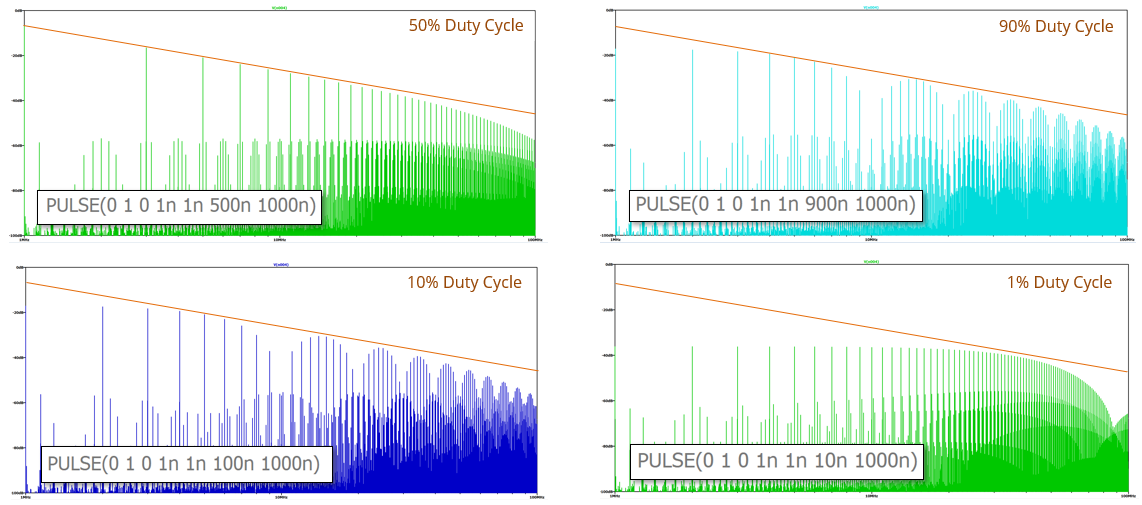EMC Question of the Week: March 7, 2022

The duty cycle of a PWM waveform increases from 50% to 90%. The amplitude, frequency and transition times stay the same. In the frequency domain, what happens to the amplitude of the first harmonic?
- increases
- decreases
- stays the same
- impossible to say
Answer
The best answer is “b.” There is less power at the first harmonic (i.e., the switching frequency) and the amplitude decreases. This might not seem intuitive, since there is more power in the signal. But the added power is mostly in the DC (0 Hz) component.
The spectrum for the 90% duty-cycle waveform is the same as the spectrum for a 10% duty-cycle waveform other than a phase shift and a change in the DC component amplitude. Note that we can obtain the 10% waveform by flipping the 90% waveform upside down (i.e., multiplying by -1 and adding a DC value equal to the peak amplitude).
For duty cycles between 0% and 50%, the amplitude of the first harmonic increases as the duty cycle increases. For duty cycles between 50% and 100%, the amplitude of the first harmonic decreases as the duty cycle increases. The plot below shows the spectra for simulated PWM waveforms with 90%, 50%, 10% and 1% duty cycles.

Have a comment or question regarding this solution? We'd like to hear from you. Email us at
